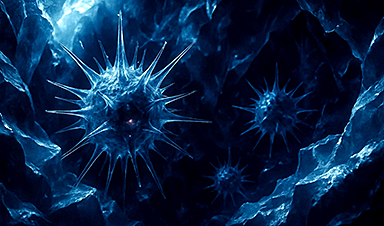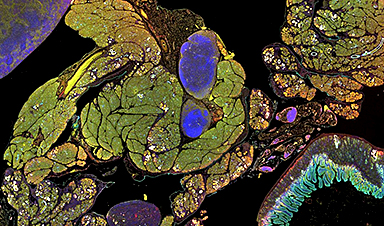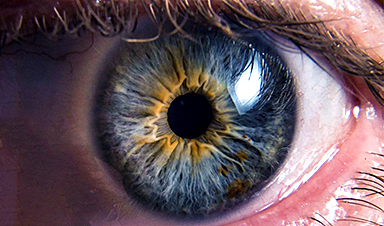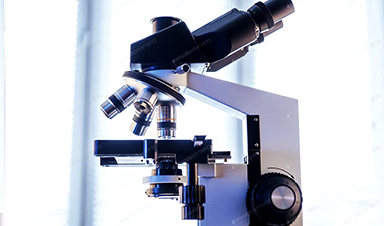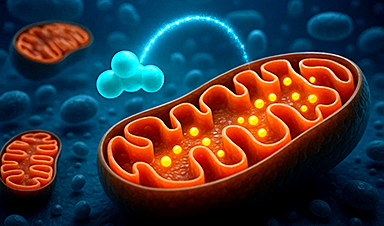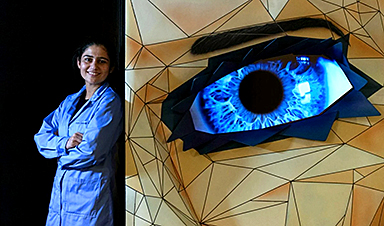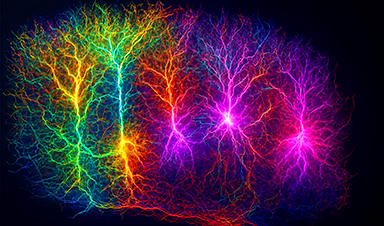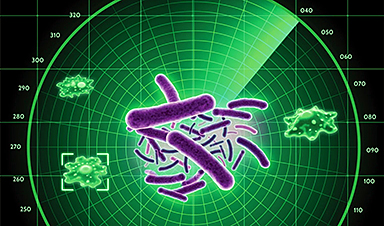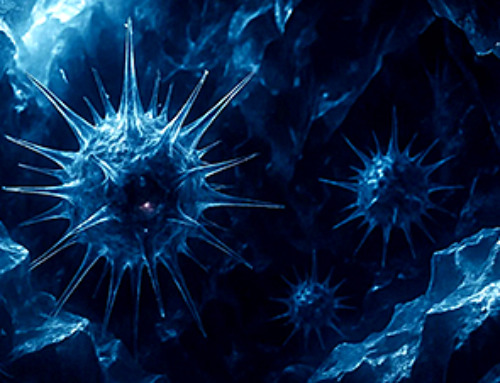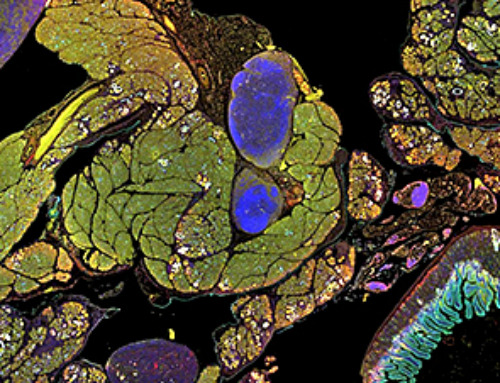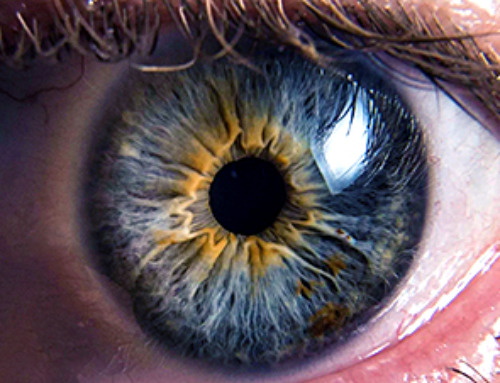A new method enables precise nanofabrication inside silicon using spatial light modulation and laser pulses, creating advanced nanostructures for potential use in electronics and photonics.
Silicon, the cornerstone of modern electronics, photovoltaics, and photonics, has traditionally been limited to surface-level nanofabrication due to the challenges posed by existing lithographic techniques. Available methods either fail to penetrate the wafer surface without causing alterations or are limited by the micron-scale resolution of laser lithography within Si.
In the spirit of Richard Feynman’s famous dictum, ‘There’s plenty of room at the bottom’, this breakthrough aligns with the vision of exploring and manipulating matter at the nanoscale. The innovative technique developed by the Bilkent team surpasses current limitations, enabling controlled fabrication of nanostructures buried deep inside silicon wafers with unprecedented control.
Breakthrough in Nanoscale Fabrication
The team tackled the dual challenge of complex optical effects within the wafer and the inherent diffraction limit of the laser light. They overcome these by employing a special type of laser pulse, created by an approach called spatial light modulation. The non-diffracting nature of the beam overcomes optical scattering effects that have previously hindered precise energy deposition, inducing extremely small, localized voids inside the wafer. This process is followed by an emergent seeding effect, where preformed subsurface nano-voids establish strong field enhancement around their immediate neighborhood. This new fabrication regime marks an improvement by an order of magnitude over the state-of-the-art, achieving feature sizes down to 100 nm.
Advanced Laser Techniques for Nanolithography
“Our approach is based on localizing the energy of the laser pulse within a semiconductor material to an extremely small volume, such that one can exploit emergent field enhancement effects analogous to those in plasmonics. This leads to sub-wavelength and multi-dimensional control directly inside the material,” explained Prof. Tokel. “We can now fabricate nanophotonic elements buried in silicon, such as nanogratings with high diffraction efficiency and even spectral control.”
Enhancing Nanofabrication Through Laser Polarization
The researchers used spatially-modulated laser pulses, technically corresponding to a Bessel function. The non-diffracting nature of this special laser beam, which is created with advanced holographic projection techniques, enables precise energy localization. This, in turn, leads to high temperature and pressure values enough to modify the material at a small volume. Remarkably, the resulting field enhancement, once established, sustains itself through a seeding type mechanism. Simply put, the creation of earlier nanostructures helps fabricate the later nanostructures. The use of laser polarization provides additional control over the alignment and symmetry of nanostructures, enabling the creation of diverse nano-arrays with high precision.
“By leveraging the anisotropic feedback mechanism found in the laser-material interaction system, we achieved polarization-controlled nanolithography in silicon,” said Dr. Asgari Sabet, the study’s first author. “This capability allows us to guide the alignment and symmetry of the nanostructures at the nanoscale.”
Future Implications and Applications
The research team demonstrated large-area volumetric nanostructuring with beyond-diffraction-limit features, enabling proof-of-concept buried nano-photonic elements. These advances have significant implications for developing nano-scale systems with unique architectures. “We believe the emerging design freedom in arguably the most important technological material will find exciting applications in electronics and photonics,” said Tokel. “The beyond-diffraction-limit features and multi-dimensional control imply future advances, such as metasurfaces, metamaterials, photonic crystals, numerous information processing applications, and even 3D integrated electronic-photonic systems.”
Concluding Remarks on Nano-Scale Fabrication Innovations
“Our findings introduce a new fabrication paradigm for silicon,” concluded Prof. Tokel, “The ability to fabricate at the nano-scale directly inside silicon opens up a new regime, toward further integration and advanced photonics. We can now start asking whether complete three-dimensional nano-fabrication in silicon is possible. Our study is the first step in that direction.”
Reference: “Laser nanofabrication inside silicon with spatial beam modulation and anisotropic seeding” by Rana Asgari Sabet, Aqiq Ishraq, Alperen Saltik, Mehmet Bütün and Onur Tokel, 16 July 2024, Nature Communications.
DOI: 10.1038/s41467-024-49303-z
The research team consists of Rana Asgari Sabet, Aqiq Ishraq, Alperen Saltik, Mehmet Bütün, and Onur Tokel, all affiliated with the Department of Physics and the National Nanotechnology Research Center at Bilkent University. Their expertise spans various fields, including optics, materials science, and nanotechnology.
Funding: This study is supported by The Scientific and Technological Research Council of Türkiye (TUBITAK) and the Turkish Academy of Sciences.
News
Studies detail high rates of long COVID among healthcare, dental workers
Researchers have estimated approximately 8% of Americas have ever experienced long COVID, or lasting symptoms, following an acute COVID-19 infection. Now two recent international studies suggest that the percentage is much higher among healthcare workers [...]
Melting Arctic Ice May Unleash Ancient Deadly Diseases, Scientists Warn
Melting Arctic ice increases human and animal interactions, raising the risk of infectious disease spread. Researchers urge early intervention and surveillance. Climate change is opening new pathways for the spread of infectious diseases such [...]
Scientists May Have Found a Secret Weapon To Stop Pancreatic Cancer Before It Starts
Researchers at Cold Spring Harbor Laboratory have found that blocking the FGFR2 and EGFR genes can stop early-stage pancreatic cancer from progressing, offering a promising path toward prevention. Pancreatic cancer is expected to become [...]
Breakthrough Drug Restores Vision: Researchers Successfully Reverse Retinal Damage
Blocking the PROX1 protein allowed KAIST researchers to regenerate damaged retinas and restore vision in mice. Vision is one of the most important human senses, yet more than 300 million people around the world are at [...]
Differentiating cancerous and healthy cells through motion analysis
Researchers from Tokyo Metropolitan University have found that the motion of unlabeled cells can be used to tell whether they are cancerous or healthy. They observed malignant fibrosarcoma [...]
This Tiny Cellular Gate Could Be the Key to Curing Cancer – And Regrowing Hair
After more than five decades of mystery, scientists have finally unveiled the detailed structure and function of a long-theorized molecular machine in our mitochondria — the mitochondrial pyruvate carrier. This microscopic gatekeeper controls how [...]
Unlocking Vision’s Secrets: Researchers Reveal 3D Structure of Key Eye Protein
Researchers have uncovered the 3D structure of RBP3, a key protein in vision, revealing how it transports retinoids and fatty acids and how its dysfunction may lead to retinal diseases. Proteins play a critical [...]
5 Key Facts About Nanoplastics and How They Affect the Human Body
Nanoplastics are typically defined as plastic particles smaller than 1000 nanometers. These particles are increasingly being detected in human tissues: they can bypass biological barriers, accumulate in organs, and may influence health in ways [...]
Measles Is Back: Doctors Warn of Dangerous Surge Across the U.S.
Parents are encouraged to contact their pediatrician if their child has been exposed to measles or is showing symptoms. Pediatric infectious disease experts are emphasizing the critical importance of measles vaccination, as the highly [...]
AI at the Speed of Light: How Silicon Photonics Are Reinventing Hardware
A cutting-edge AI acceleration platform powered by light rather than electricity could revolutionize how AI is trained and deployed. Using photonic integrated circuits made from advanced III-V semiconductors, researchers have developed a system that vastly [...]
A Grain of Brain, 523 Million Synapses, Most Complicated Neuroscience Experiment Ever Attempted
A team of over 150 scientists has achieved what once seemed impossible: a complete wiring and activity map of a tiny section of a mammalian brain. This feat, part of the MICrONS Project, rivals [...]
The Secret “Radar” Bacteria Use To Outsmart Their Enemies
A chemical radar allows bacteria to sense and eliminate predators. Investigating how microorganisms communicate deepens our understanding of the complex ecological interactions that shape our environment is an area of key focus for the [...]
Psychologists explore ethical issues associated with human-AI relationships
It's becoming increasingly commonplace for people to develop intimate, long-term relationships with artificial intelligence (AI) technologies. At their extreme, people have "married" their AI companions in non-legally binding ceremonies, and at least two people [...]
When You Lose Weight, Where Does It Actually Go?
Most health professionals lack a clear understanding of how body fat is lost, often subscribing to misconceptions like fat converting to energy or muscle. The truth is, fat is actually broken down into carbon [...]
How Everyday Plastics Quietly Turn Into DNA-Damaging Nanoparticles
The same unique structure that makes plastic so versatile also makes it susceptible to breaking down into harmful micro- and nanoscale particles. The world is saturated with trillions of microscopic and nanoscopic plastic particles, some smaller [...]
AI Outperforms Physicians in Real-World Urgent Care Decisions, Study Finds
The study, conducted at the virtual urgent care clinic Cedars-Sinai Connect in LA, compared recommendations given in about 500 visits of adult patients with relatively common symptoms – respiratory, urinary, eye, vaginal and dental. [...]

